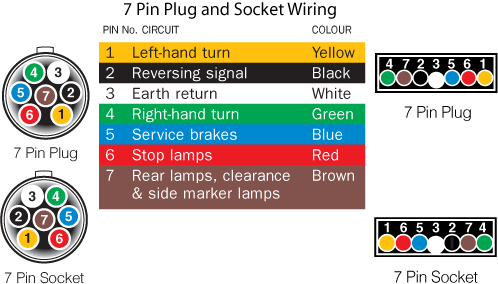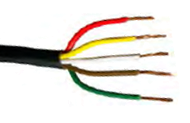Tow Dolly
Lights
Note - Before doing any cable fitting, it is advisable that the trailer is fully prepared and painted or galvanised and at the bare minimum, has a primer coat applied.
From the front of the trailer, slide a semi-rigid section of mild steel "pull" wire down the drawbar until it comes out at the end of the drawbar. Tape the trailer 5 core cable (seven core if you are fitting electric brakes) to the end of the "pull" wire and pull from the drawbar end until the cable comes through.

Pull the cable over the top of the drawbar and cut once you have approx. 400mm cable protruding. Slide a section of flexible conduit sheath over the cable and pass it back over and into the gap between the drawbar and the pivot support tube. Tape or heat shrink the conduit into place. This conduit will protect the cable from wearing/chafing on the steel under normal use.
Drill a thru hole through the drawbar angle brace and pivot support tube to allow cables to be threaded through to the right handlights.
Mount a small junction box on the axle tube as shown in the drawing above and drill cable holes. Where possible use the correct size grommets to help seal the junction box from water and dust/dirt and to prevent chafing of the cables. Once the cables have been connected, use some silicon to fully seal around the cables.
"P" clip the cables to the axle beam and guard braces.
Fitting Lights
Make sure that your number plate light is in the correct position and that the light will shine on the plate. Keep your lights as far to the outside edge of the guard as practical.
Mark out your light position on the guards and drill the mounting and cable holes as per your lights instructions or template.


There are a couple of ways of joining the wire together in the junction box. Using a strip connector inside the 
Other options include soldering the wires together and sealing with insulation tape and a heat shrink tube or using crimp connectors and covering again with heat shrink tube. These options take less time to do than the first option, but will cause a bit of a headache when maintenance needs to be done at a later date.
SIDE MARKER LIGHTS
For side marker lights, an additional two lengths of 2 core cable need to be run from the junction box.
Crimp connectors are the most convenient method for joining the wires to sealed lights with attached wiring.

PLUG
Pass the plug end cable through the cable hole drilled in the side of the drawbar and slide a suitable sized rubber grommet over the cable to prevent any chafing of the cable where it passes through the drawbar.
Trim the length of cable so that the cable can move with the trailer behind the tow vehicle without being stretched or kinked, but not too long that it will dangle too close to the ground.
Slide any plug sleeve or nut, that came with the plug, over the cable, then strip each end of the 
If possible, check all your lights by hooking the trailer plug up to your tow vehicle. If you don't have a mate to help you check your brake lights, grab a mirror and position it behind the trailer where you can see it from the tow vehicle.
REMOVABLE LIGHTS
In most cases, the lights on the tow dolly guards will be insufficient while towing a vehicle and may not comply with the transport laws due to limited or obscured visiblity. It is recommended that an additional plug is wired into the trailer cabling to allow a set of temporary lights (light board or magnetic lights) to be fitted to the rear of the towed vehicle while under tow.
If you are continuously towing a dedicated vehicle (behind a motorhome/RV for example), get your local auto electrician to wire the towed vehicle lights to operate while being towed.